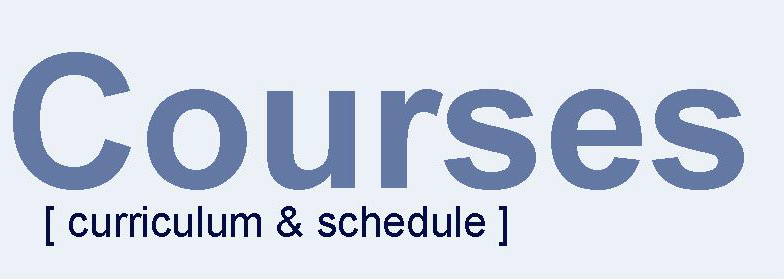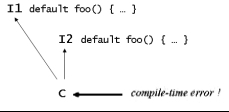| Angelika Langer - Training & Consulting |
| HOME | |

|
|

|
|

|
|
| GENERICS | |
|
LAMBDAS |
|
| IOSTREAMS | |
| ABOUT | |
| CONTACT |
The Lambda Tutorial is available in PDF format (330KB)
The Lambda Reference (note: it is an incomplete draft version) is available in PDF format (1200KB)
Keep in mind that part of the Lambda/Streams Tutorial & References is still in draft version.
![]()
Default Methods
Interface Evolution
public interface Iterable<T> {
public Iterator<T> iterator();
public void forEach(Consumer<? super T> consumer);
}
With this modification, every implementing class does no longer compile because it lacks an implementation of the forEach method. The point of a default method is that it supplies the missing implementation so that the implementing classes need not be changed. Using a default method the Iterable interface looks like this:
public interface Iterable<T> {
public Iterator<T> iterator();
public default void forEach(Consumer<? super T> consumer) {
for (T t : this) {
consumer.accept(t);
}
}
}
The obvious difference to a regular method in a class is the default modifier. Otherwise, the default method has an implementation pretty much like a regular method in a class.
In addition to the default modifier there is another notable difference between regular methods in classes and default methods in interfaces: methods in classes can access and modify not only their method arguments but also the fields of their class. A default method in contrast can only use its arguments because interfaces do not have state. (The fields that you can define in an interface are not really state; they are static final fields, i.e. symbolic names for compile-time constant values, which the compiler eliminates during compilation.) All that the implementation of a default method can build on are its own method arguments and the other methods declared in the interface.
Take a look at the default implementation of the forEach method above. To illustrates the principle we slightly rewrite it; we replace the for-each loop by explicit use of an iterator. Rewritten the Iterable interface looks like this.
public interface Iterable<T> {
public Iterator<T> iterator ();
public default void forEach(Consumer<? super T> consumer ) {
Iterator<T> iter = iterator ();
while (iter.hasNext()) {
consumer .accept(iter.next());
}
}
}
The forEach method uses
• its Consumer argument, which represents the functionality that is to be applied to each element in the collection, and
•
the
not yet implemented, abstract
iterator
method that the
Iterable
interface declares.
Essentially, default methods are combinations of the other methods declared in the same interface. multiple inheritance ambiguous inheritance
Multiple Inheritance and Ambiguities
Since classes in Java can implement multiple
interfaces and each interface can have default methods, the inherited methods
may be in conflict with each other if they have matching signatures.
For instance, a class
C
might inherit a method
foo
from both an interface
I1
and an interface
I2
.
It raises the question: which method does class
C
inherit?

Diagram: Ambiguous Multiple Inheritance - Needs explicit resolution.
In such a situation the compiler cannot resolve the ambiguity and reports an error. In order to enable the programmer to resolve the ambiguity there is syntax for explicitly stating which method class C is supposed to inherit. A resolution could look like this:
class C implements I1, I2 {
public void foo() { I1.super .foo(); }
}
This is just one example of a conceivable
ambiguous inheritance of default methods. There are numerous further
examples. In some situation the compiler can resolve the situation because
the language has a resolution rule for that situation. In those few cases
where the compiler reports an error (like in the example above) there is
syntax for explicit resolution. If you are interested in a more elaborate
discussion of multiple inheritance in Java and/or details regarding the
resolution of ambiguous multiple inheritance of default methods, please
consult the section on "Default Methods" in the
Lambda Reference
document.
CONTENT